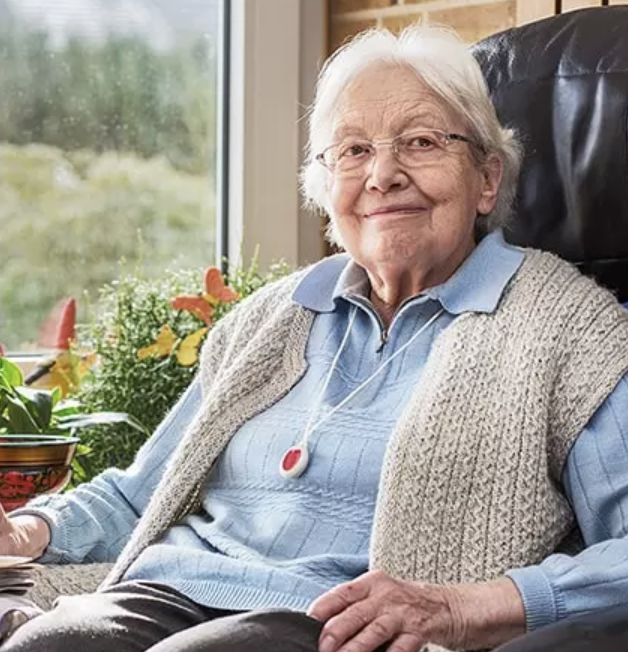
Chronic Obstructive Pulmonary Disease, commonly known as COPD, is a widespread lung condition that affects millions of people around the world. It's a chronic, progressive disease that can significantly impact an individual's quality of life. In this article, we'll delve into what COPD is, its causes, symptoms, and management.
Chronic Obstructive Pulmonary Disease (COPD) encompasses chronic bronchitis and emphysema, culminating in airflow restriction and breathing difficulties. This article aims to elucidate the intricacies of COPD, exploring its causes, symptoms, and management strategies to empower individuals grappling with this chronic respiratory condition.
Causes of COPD:
Find YOUR ideal care home NOW!
COPD primarily stems from:
1. Tobacco smoke: Active smoking and secondhand smoke significantly increase the risk.
2. Long-term lung irritants: Exposure to pollutants, chemical fumes, and dust exacerbate COPD.
3. Genetic factors: Alpha-1 antitrypsin deficiency predisposes individuals to COPD development.
Symptoms of COPD:
| Symptom | Description |
|---|---|
| Shortness of Breath | Breathing difficulties, especially during physical exertion, are common in individuals with COPD. |
| Chronic Cough | A persistent cough, often accompanied by mucus production, is a hallmark symptom of COPD. |
| Wheezing | A wheezing or whistling sound when breathing is a frequent symptom of COPD. |
| Chest Tightness | A sensation of pressure or tightness in the chest is often felt by individuals with COPD. |
Managing COPD:
Effective COPD management involves:
1. Smoking cessation: Vital for halting disease progression.
2. Medications: Bronchodilators and corticosteroids alleviate symptoms and reduce inflammation.
3. Pulmonary rehabilitation: Comprehensive programs improve physical and emotional well-being.
4. Oxygen therapy: Beneficial for individuals with low blood oxygen levels.
5. Lifestyle adjustments: Avoiding lung irritants, maintaining a healthy diet, and staying active.
6. Vaccinations: Influenza and pneumonia vaccines prevent exacerbations.
COPD poses significant challenges to respiratory health but can be effectively managed with a holistic approach. Early recognition of symptoms and proactive measures, including smoking cessation and adherence to treatment regimens, are paramount. By empowering individuals with knowledge and support, COPD management becomes more attainable, fostering improved lung health and overall well-being.
FAQ:
What is Chronic Obstructive Pulmonary Disease (COPD)?
COPD is a group of chronic lung diseases, including chronic bronchitis and emphysema, that lead to airflow restriction and breathing difficulties.
What causes COPD?
COPD is primarily caused by smoking (both active and secondhand), long-term exposure to lung irritants (such as chemical fumes and dust), and in some cases, genetic factors like alpha-1 antitrypsin deficiency.
What are the symptoms of COPD?
Common symptoms of COPD include shortness of breath (especially with exertion), chronic cough (with mucus production), wheezing, and chest tightness.
How is COPD managed?
Effective management includes smoking cessation, medication (such as bronchodilators and corticosteroids), pulmonary rehabilitation, oxygen therapy, and lifestyle adjustments like avoiding lung irritants, maintaining a healthy diet, and staying active.
Can COPD be cured?
COPD is a progressive and chronic condition with no cure, but its symptoms can be managed and its progression slowed with the right treatments and lifestyle changes.
How can smoking cessation help with COPD?
Quitting smoking is the most critical step in halting the progression of COPD and preventing further damage to the lungs.
What medications are used to treat COPD?
Bronchodilators and corticosteroids are commonly prescribed to alleviate symptoms and reduce inflammation in the lungs.
How does pulmonary rehabilitation help COPD patients?
Pulmonary rehabilitation is a comprehensive program that combines exercise, education, and support to improve the physical and emotional well-being of individuals with COPD.
What role does oxygen therapy play in COPD management?
Oxygen therapy helps individuals with COPD maintain adequate blood oxygen levels, reducing shortness of breath and improving quality of life.
How can vaccinations help prevent COPD exacerbations?
Vaccines for influenza and pneumonia can help prevent respiratory infections, which can exacerbate COPD symptoms and lead to complications.
For assistance in selecting a care home or facility tailored to your needs, please contact us at 0230 608 0055 or complete our online form.
Do you need a care home for yourself or your loved one?
Share this article :
Latest posts
You are looking for an establishment for your loved one ?
Get availability & prices
Fill in this form and receive
all the essential information
We would like to inform you of the existence of the opposition list for telephone canvassing.

.webp)









